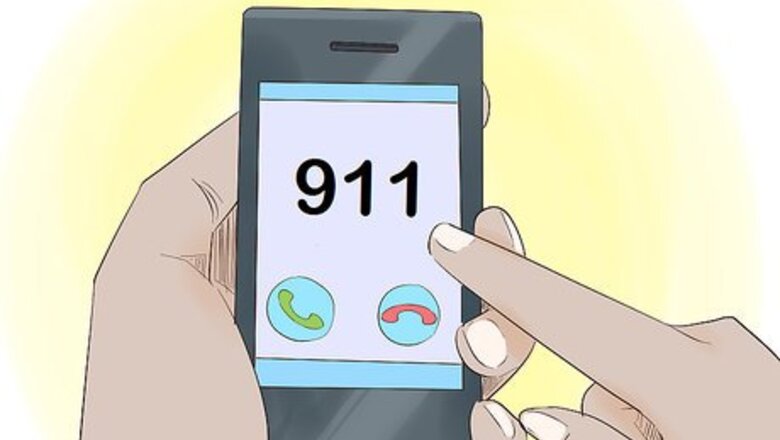
views
X
Trustworthy Source
National Highway Traffic Safety Administration
U.S. government agency responsible for writing and enforcing Federal Motor Vehicle Safety Standards
Go to source
Knowing how to identify potential drunk drivers and reporting them successfully can help keep the roads safe for all travelers and, in some cases, may even save someone's life.
Calling the Police
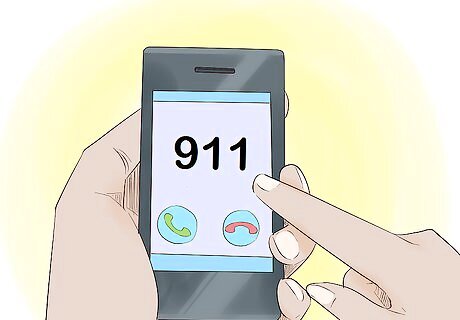
Call 911. If you’re driving on your own, pull over so you can use your phone without putting yourself and others in danger. If your phone has a hands-free option, feel free to use that so you can keep driving. If you’re traveling with multiple people, ask one of your passengers to make the call instead.
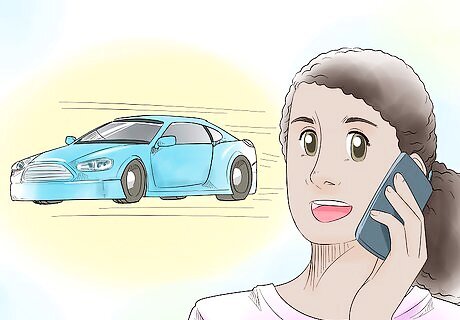
Tell the police what unsafe and illegal actions you saw the driver commit. So the police have reason to find and stop the car, tell the emergency hotline operator that you want to report a potential drunk driver and give them details about what the driver is doing. Focus on illegal and clearly dangerous actions like speeding, swerving between lanes, and running red lights, which may give police enough reason to detain the driver.
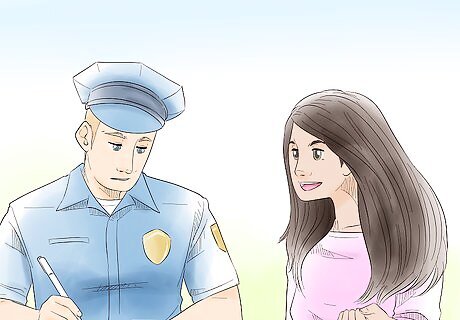
Tell the police the location of the vehicle and the direction it’s going. So the police can have an officer on the scene quickly, tell the emergency hotline operator the following information about the car’s location: The street you last saw it on. Nearby intersections, mile markers, and notable landmarks. The direction the car is traveling. How fast the car is going.

Describe the vehicle in as much detail as possible. To help police find the car successfully, give the emergency hotline operator as much information about it as you possibly can. Try to include things like the: License plate number. Color. Make and model. Production year. Dealership logos. Bumper stickers. Damage marks.
Spotting Drunk Drivers
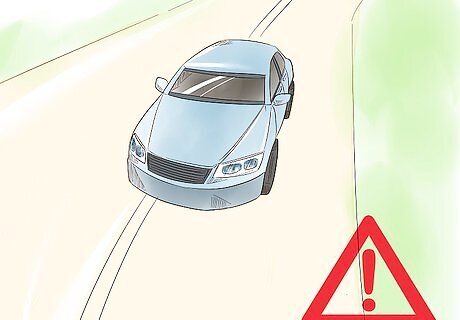
Look out for cars that are swerving and driving erratically. In many cases, the first sign of a drunk or distracted driver comes from their location on the road. Keep your eyes peeled for people who are: Driving in the center line Swerving between multiple lines. Drifting toward the side of the road. Coming dangerously close to road signs, barriers, and other cars.
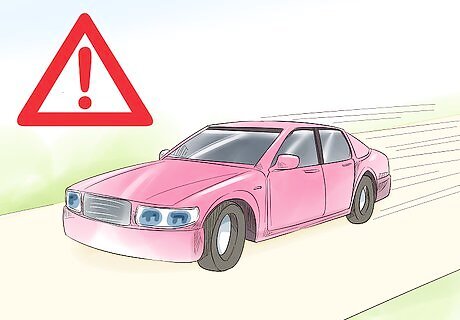
Be aware of cars driving significantly over or under the speed limit. When intoxicated, drivers often lack the perception necessary to understand how fast they’re going. Because of this, they tend to drive intensely fast, well beyond the posted speed limit, or incredibly slow, often moving at a crawl. Look out for drivers going 10 miles (16 km) per hour above or below the speed limit, especially if their speed fluctuates radically and carelessly.
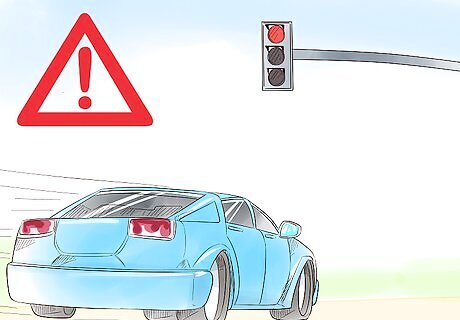
Take note of drivers that have trouble stopping. When driving under the influence, many people have difficulty judging the distance between themselves and their surroundings. As such, drunk drivers often stop well before or after stop signs, stop lights, and limit lines. In many cases, drivers stop or park at strange angles. When combined with speed impairment, these stops become jerky and random.
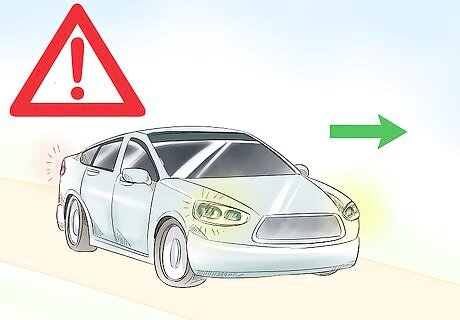
Watch for unsafe and illegal driving actions. Often, a person paying no attention to traffic laws is the clearest indication that they are driving under the influence. Take special note of these dangerous and illegal actions, since it gives the police greater cause to stop and detain the driver: Tailgating. Using the incorrect turn signal. Turning illegally. Driving with the headlights off. Driving the wrong way. Running red lights.
Staying Safe
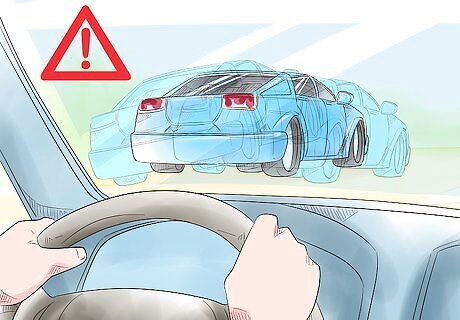
Be vigilant around drunk drivers. If you encounter a drunk or otherwise unsafe driver, keep an eye on their vehicle at all times. Whether you’re in front or behind it, make sure you can clearly see the car and its surrounding area. If necessary, turn off any music or other distractions so you can focus on staying safe.
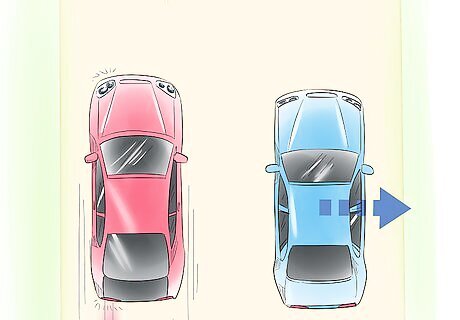
Stay as far away from the vehicle as possible. Unless absolutely necessary, do not attempt to pass the car in case the driver suddenly swerves or loses control. If you have to pass, move to the lane farthest away from the vehicle, wait until the driver seems somewhat stable, then pass. If possible, pull over so the car can get a safe distance away from you.
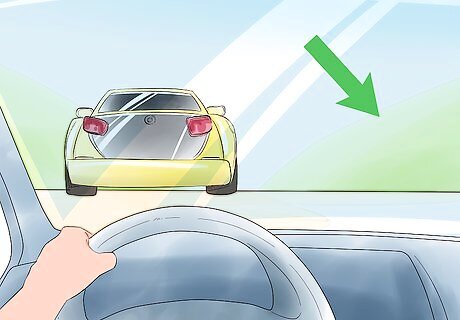
Drive defensively. When dealing with a drunk driver, the best offense is a good defense. Because the driver may speed up, slow down, stop, or swerve at any time, be ready to make quick, split-second decisions about how to handle the situation. Make sure to keep both hands on the wheel so you can maneuver your car in any way necessary. Drive in spots where the areas around your car are not occupied, that way you can change lanes at any time.
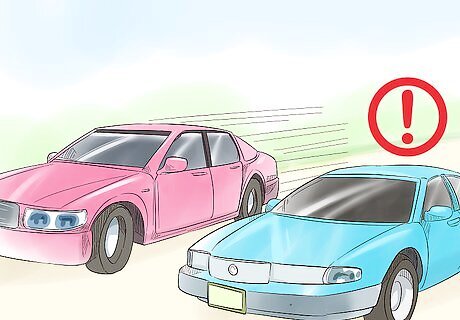
Do not follow or try to stop the vehicle. The best way to stop a drunk driver is by calling the police. Attempting to follow the vehicle can put you in danger, and trying to stop the driver is both dangerous and, depending on your methods, illegal.




















Comments
0 comment